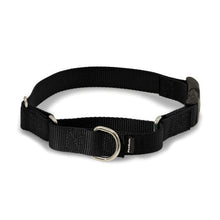8 Games You Can Use To Teach Your Puppy Not To Bite

German shepherd puppies bite for many reasons, just as all puppies do. They explore their world through their mouth. That means whatever they want to explore and play with goes in their mouth. The problem is, the little land sharks have razor sharp teeth.
Herding dogs such as German shepherds like to engage in play biting, frequently called nipping and mouthing. Other popular herding breeds predisposed to this behavior include the malinois, husky, and Australian shepherd.
As young puppies, these dogs have natural herding tendencies and love to nip heels, hands, pant legs, shoes, or anything else that moves and looks like fun. They are also accustomed to rough and tumble play with their littermates, which include play biting.
While play biting may seem cute at first, as they began teething and grow stronger, the behavior can become quite painful and even harmful. Young dogs that are encouraged to rough house often have a hard time turning off excited behavior. As they grow, play biting can become painful. It can also easily get out of control and unintentionally dangerous, especially around kids or fragile adults.
A puppy can learn not to play bite by teaching “bite inhibition.” Bite inhibition means teaching that puppy teeth should not be biting human skin. Bite inhibition also teaches puppies how to safely play with people and other dogs.
The easiest way to teach bite inhibition is through redirection. Redirection is simply redirecting a puppy’s attention onto you or something else other than your skin. Redirection works best if it used before the puppy bites, in other words, in anticipation of the behavior.
Redirection is great because it can be incorporated into playtime and training. Puppyhood is a great time to start marker or clicker training and perfect for teaching bite inhibition. Some games you can play to teach your puppy not to bite include:
1. Toy Time
For young puppies, one of the easiest things you can do is redirect the play biting from your arm onto a toy. Simply encourage the puppy to play with the toy and offer lots of praise when they do. Be sure to have lots of toys with different textures on hand. If the puppy starts biting again, ignore the puppy and redirect to the toy then praise them when they pick up the toy.
Always use toys that are already in your environment. In other words, don’t inadvertently teach your German shepherd that if they bite you, you will go get them a new toy to play with.
2. Touch Massage
Teaching a puppy to allow touching without play biting can be a challenge. Start by calmly touching the puppy and when they sniff without biting praise and offer a click and a treat. Move to touching different body parts. This is an important skill to learn for vet visits, etc. As their comfort increases, teach them how to have their paws handled, to shake, roll over, and more.
3. Touch A Target
Teaching a puppy to touch a target is a lot of fun. It involves teaching the pup to touch the palm and other objects on command. Any object can be used as a target pointing stick but they also sell them for this purpose. Once the puppy learns how to touch, the list of objects they can learn to touch are endless.
4. Fetch
Fetch is another great game because it also burns off energy. If the puppy gets super excited and starts biting, redirect to the ball and begin to play. When the game is over, encourage the puppy to rest.
5. Tug
This game can get a little uncomfortable to teething dogs but playing tug is fun for puppy and owner and also teaches self control, by teaching to drop the tug. It burns off energy and dogs of all ages enjoy it.
6. Training Time
Using dog food as treats, when the puppy gets excited and play bites, try some basic training such a sit, down, heel, etc. Reward the puppy with food. Make it fun by interjecting energy into it. They key is to make it exciting and increase the challenge as they master their training. Such as teaching sit and down in succession or puppy push-ups.
7. Food Puzzles
There are many food puzzles on the market that are fun as well as challenging. When puppies start biting, redirect some of that energy onto a challenge. For the purpose of playing a game, choose one that is more than just a chew toy and requires some mental and physical energy to solve, such as Tug A Jug or IQ Treat Balls.
8. Hide and Seek
Hide food or small toys around the house or outside and help the puppy find it. This game is fun because it encourages the dog to use their nose and is mentally stimulating while being rewarding. As they master the game, it can easily be made more difficult.
In conclusion:
When playing and training, remember that play biting is normal. When reaching out to play and touch your puppy, mouthing is their way of reaching out to touch you. Teaching bite inhibition takes time and patience but is also the foundation for future training and builds trust between you and your puppy.
Punishments like yelling and hitting will not decrease play biting but will instill a dislike of touch into a puppy. If a dog bites hard, yelping like a puppy will often get the pups attention so their behavior can be redirected. Always get the advice of a trainer if more help is needed.
Please share these helpful tips with your family and friends.
























